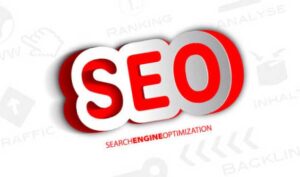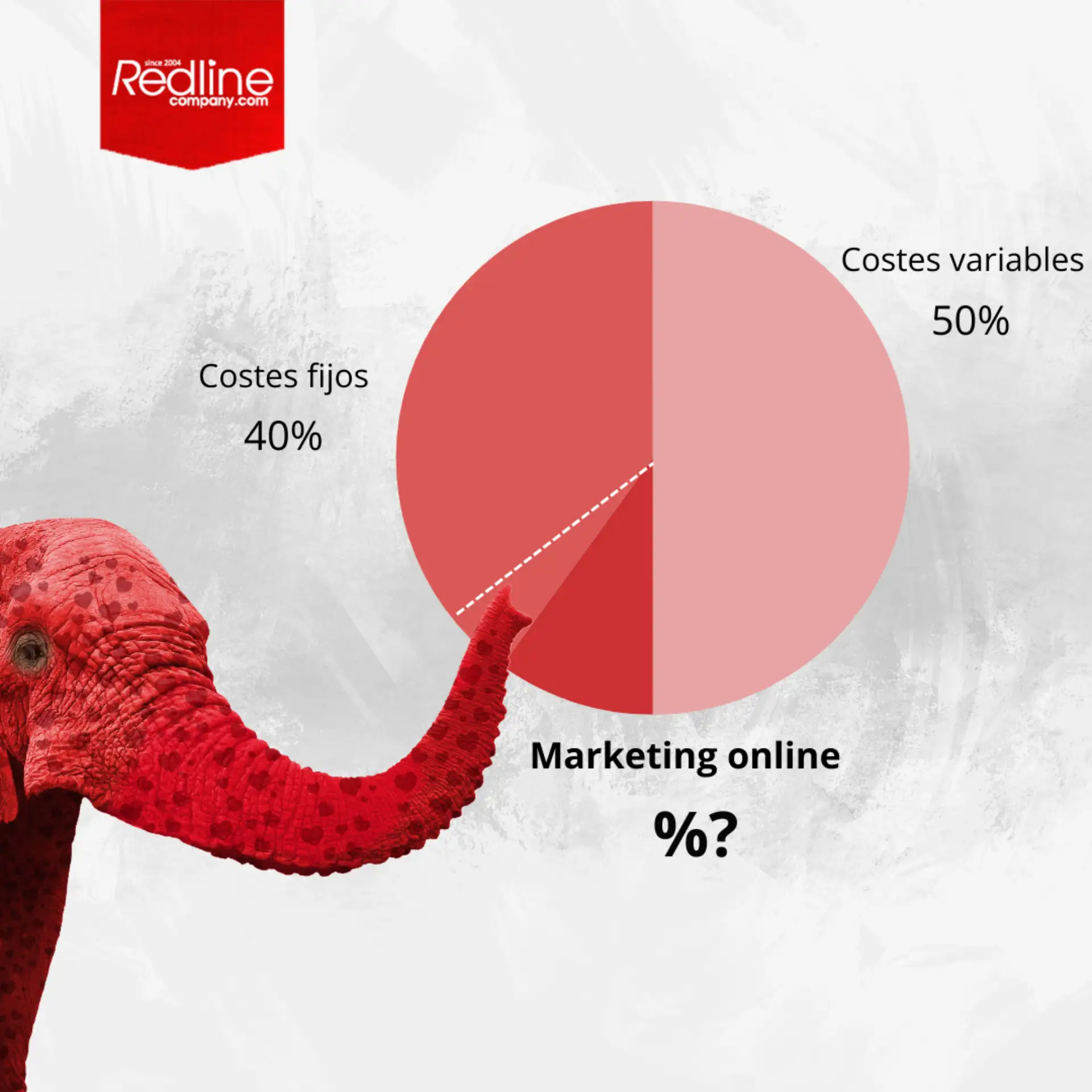POR QUÉ TU NEGOCIO NECESITA UNA ESTRATEGIA DE MARKETING DIGITAL.
““Google sólo te ama cuando todos los demás te quieren primero”
Wendy Piersall
Para que una empresa pueda tener éxito, necesita una estrategia de marketing sólida. El uso del marketing digital no solo es una decisión que protegerá su inversión, sino que también una estrategia de marketing efectiva hará crecer su negocio.
Algunas compañías todavía son reacias a aceptar esta idea. Creen que es arriesgado invertir en publicidad digital y prefieren las rutas tradicionales de publicidad impresa, por ejemplo. Pero lo que no saben es que podrían estar perdiendo un gran porcentaje de clientes con su estrategia porque no están presentes donde ellos están en Internet .
Puede sonar extremo, pero la realidad es que el marketing tradicional se ha puesto patas arriba por el marketing online. Si tiene un sitio web, una plataforma de comercio online o está pensando en crear uno, debería considerar invertir en marketing digital.
¿Por qué? Porque si no existe en Internet, simplemente no existe. Tan simple como eso…
Estas son las principales razones por las que debe invertir en marketing digital
Una estrategia de marketing digital es esencial para que su negocio avance, especialmente en 2018. Hoy día, su sangre, sudor y lágrimas no son suficientes para mantener su negocio a flote. Debe familiarizarse con los conceptos de marketing digital si desea sobrevivir, y esto es válido para todos los negocios en todas las industrias.
¿CÓMO DEFINES EL MARKETING DIGITAL?
El marketing digital abarca todos los esfuerzos de marketing que utilizan un dispositivo electrónico o Internet. El objetivo clave es promover las marcas a través de diversas formas de medios digitales. Más específicamente, el objetivo del marketing digital es conectar una empresa u organización con su público objetivo a través de canales digitales.
Lo digital también ha permitido a los consumidores autoeducarse, y ser mucho más escrupulosos al tomar su decisión de compra definitiva.
Esto crea la obligación para las organizaciones de reconocer y adaptarse a este crecimiento digital si quieren lograr el éxito duradero de los clientes y ser lo más rentables posible. El 76% de los marketers piensan que el marketing ha cambiado más en los últimos dos años que en los últimos cincuenta,lo que significa que la mejora continua es esencial.
Una estrategia digital fuerte ya no es un lujo para las organizaciones: es un elemento fundamental de cualquier modelo comercial competitivo.
A medida que los consumidores adquieren más poder por lo digital, dependen menos de la experiencia de las ventas y más de su propia capacidad de investigación. En respuesta a este cambio en el poder, las organizaciones necesitan revitalizar sus funciones de ventas y marketing y utilizar los mismos canales y plataformas que sus clientes para llegar a ellos de manera efectiva.
Actualmente, hay muchas técnicas digitales que pueden mejorar el alcance, alentar a los usuarios a convertir y aumentar la visibilidad de su negocio.
Comprender las tácticas de marketing digital puede ayudar a los empresarios a hacer varias cosas, tales como:
- Conectarse con clientes en Internet
- Lleguar a los consumidores móviles
- Incrementar el ROI
- Seguir las interacciones del consumidor
- Obtener conversiones más altas
Aquí hay otras estadísticas disponibles para mostrar el potencial del marketing digital:
- Según Statistahay alrededor de 2.46 mil millones de usuarios de redes sociales en todo el mundo, es una de las técnicas promocionales más preferidas.
- Facebook toma la delantera social, con más de 2,2 mil millones de usuarios activos en todo el mundo.
- Según la encuesta realizada por Advanced Web Ranking, On-page SEO es la táctica SEO más efectiva en 2017.
- De acuerdo con el Informe de Impacto Económico de Google, Google AdWords fomenta las ventas y proporciona un promedio de $ 2 de ingresos por cada $ 1 gastado en Anuncios.
- Más del 49% de las organizaciones no sabían sobre marketing digital o no tenían una estrategia de marketing digital con rendimiento, por lo que perdieron varias oportunidades de negocio y se están quedando atrás de sus competidores.
Está claro ahora que necesitas absolutamente tener una presencia digital.
Una estrategia digital integrada asegurará que todos sus esfuerzos de marketing digital estén optimizados. Dado que Internet se ha filtrado en todos los aspectos posibles de nuestras vidas, es imperativo que se mantenga a la vanguardia y se mantenga al tanto de sus competidores. Las empresas a veces son reacias a invertir en el medio digital, pero aquellos que invierten en estrategias de marketing digital tienen una expectativa de crecimiento de los ingresos 2.8 veces mayor, según Google.
El éxito de tu negocio depende del tipo correcto de estrategia, y el tipo correcto de estrategia puede a su vez generar mayores ventas, nuevos clientes y crecimiento a largo plazo.
Si bien existen varias certificaciones y cursos de marketing digital que pueden ayudarlo a profundizar en las diversas herramientas y tecnicismos, es esencial que conozca algunas de las mejores técnicas y prácticas utilizadas por una organización exitosa.

The 2 main pillars of digital marketing are online marketing and offline marketing:
ONLINE DIGITAL MARKETING
Online mediums allow business to promote themselves and is the most preferred.
¿Por qué?
Simply, because there are more than 4 billion internet users worldwide who actively surf social media platforms, search engines, Google partner sites, and eCommerce Portals. By being present online, a business can enhance its reach towards those users.
The 7 main categories of online marketing are:
- Search engine optimization (SEO)
- Search engine marketing (SEM)
- Content marketing
- Social Media Marketing (SMM)
- Pay-per-click advertising (PPC)
- Affiliate marketing
- Marketing por correo electrónico
OFFLINE DIGITAL MARKETING
Offline electronic mediums (a digital medium outside of the Internet), still have their impact on human behaviour and can encourage users to connect with the brand, that’s why many choose to advertise their business using digital elements such as; electronic billboards, moving hoardings, offline stores with digital displays, etc. Offline digital marketing can include:
- Radio Marketing
- Television Marketing
- Phone Marketing
- Enhanced Display Marketing
You need to figure out which platforms your customers are using to consume information. No matter how good your communication is, it will go to waste if your audience does not understand it, does not relate to it or worse, does not even see it. A clearly defined digital strategy will consider the important task of understanding your audience, how you can make use of each channel and touchpoint, and what message needs to be communicated to your potential consumers.
If you’re trying to capture a younger audience through television commercials, it’s unlikely that you’ll succeed. Millennials are spending more time on their mobile devices than the other generations combined.
What does this mean for you as a business owner?
You need to adapt.
SO, HOW CAN DIGITAL MARKETING BE BROKEN DOWN INTO DIFFERENT SPECIALTIES?
a) SEO
One of the key marketing strategies that can help any business with a web presence to build their brand is Search Engine Optimization (SEO): the process of tailoring your website to the algorithms that search engines use to rank websites. Basically, if you´d like your business ranking on the first page of Google, you need an SEO strategy.

All major search engines such as Google, Bing and Yahoo have primary search results, where web pages and other content such as videos or local listings are shown and ranked based on what the search engine considers most relevant to website users. There are, on average, ten positions on a search engine results page (SERP), essentially the pages displayed by the search engine in response to a query. The pages that fill those positions are ordered by rank.
The higher your page is on the search results page, the better your click-through rate and ability to attract searchers. Results in positions 1, 2, and 3 receive much more traffic than results down the page.
Creating an SEO content strategy
So, what should you consider when creating an SEO strategy
- Keywords. Keyword research is the first step to a successful SEO strategy but first you must understand what people are searching for in a search engine. What are the keywords they use to drive targeted traffic to their products? If you notice that some keywords are too competitive in your niche, for example you are a real estate business on the Costa del Sol, but Marbella is searched for more than 100,000 times per month, go with long-tail keywords (between two and five words) which will be easier for you to rank for. The longer the keyword, the less competition you will have for that phrase in the engines and you are more likely to rank for it.
- Meta tags. Meta tags still play a vital role in SEO. Google looks at your page title as a signal of relevance for that keyword. The same holds true for the description of that page. Meta tags are added to the backend of a website, i.e. the part that customers can´t see.
- Contenido. Creating quality content is the best way to not only rank for keywords, but also create a positive user experience on your website. Plus, good content will be shareable and of real value to customers.
- Backlinks. If content is king, then backlinks are queen. It’s not about which site has the most links, but who has the most quality links pointing back to their website. So, spam websites linking to your website will not count! The best way to encourage backlinks is to have a media strategy to encourage the online press to backlink to your website. Creating newsworthy content is vital.
- Redes Sociales. The algorithms have truly changed since social media first emerged. Many content websites are community-oriented. Therefore, e-commerce stores must establish a strong social media presence on social media platforms such as Facebook, Pinterest, Twitter, etc. These sites send search engines signals of influence and authority.
- Product images. When many consumers search for products in the search engines, not only are they looking at the “Web” results, but they’re also looking at the “Images” results. If you have quality images of that product on your site, and the files’ names contain relevant keywords, these images will rank well in search engines. This avenue will drive a lot of traffic to your site, as potential customers will click on that image to find your store.
In addition to optimizing these six areas of your site, analyse your competitors and see what they are doing in terms of on-page optimization, off-page optimization and social media.
If your business has an online presence, you cannot afford to miss out an SEO strategy. We´re specialized in SEO, contact us today to find out how we can help your business get a boost.
b) SEM
Generally, “search engine marketing” refers to paid search marketing and it is a powerful tool for businesses. It allows you to pay for advertisements that are pre-screened to interested parties based on what they are searching for. Best of all, you only pay if the customer clicks through the ad and takes the first step down your sales funnel.
Keywords are the foundation of search engine marketing. Your choice of keywords and phrases to target has a huge impact on your overall conversions. The trick is to identify specific things your business does that people are likely to be searching for, but to know when a key-phrase is getting so long and specific that it’s unlikely someone will actually type it in.
SEM usually works out slightly more expensive than SEO practices as you will need to pay for certain paid listings and advertisements. But it is certainly worth it! Thankfully, there are now many tools and platforms, such as Google AdWords and Bing Ads which can help you keep your SEM expenses relatively low.
c) CONTENT MARKETING
Content marketing is a strategic marketing approach focused on creating and distributing valuable, relevant, and consistent content to attract and retain a clearly defined audience.
Through content marketing you are providing truly relevant and useful content to your prospects and customers to help them solve their issues and to engage them in wider topics related to your business.
Businesses that use content marketing report:
- Increased sales
- Cost savings
- Loyal customers who typically buy again or continue to use a service
Regardless of what type of marketing tactics you use, content marketing should be a core part of your digital marketing strategy.
d) SMM (social media marketing, for example, Facebook)
The question marketers must ask themselves is: “What makes my brand so interesting that people will want to talk about it and share it with their friends?”
You can’t succeed in social media if you don’t have something interesting to say. Social media is the vehicle for communicating and distributing interesting stories (content) across the Internet.
You should work to grow an audience and feed them interesting content, relevant to their interests. Your competition isn’t the guy or girl who sells the same stuff that you do. Your competition is every person, every brand, every small business, every big technology company, every politician and every celebrity who has something interesting to say.
That’s why it’s important to have a plan.
Content marketing can be pulled through to social media but it can also survive without it. Social media on the other hand, would not be popular without interesting, informative or humorous content. Before entering the social media space, you need a plan to figure out how to deliver interesting content on a consistent basis so that you may attract and retain the attention of your target audience. That is your content strategy.
e) PPC
PPC stands for pay-per-click, a model of Internet marketing in which advertisers pay a fee each time one of their ads is clicked.
PPC is all about relevance.

Search engine advertising is one of the most popular forms of PPC. It allows advertisers to bid for ad placement in a search engine’s sponsored links when someone searches on a keyword that is related to their business offering. In a PPC campaign when someone clicks on your ad, you pay the current cost per click (CPC) from your budget. Once your budget has been depleted, Google ceases to run your ads until you replenish your fund. When PPC is working correctly, the fee is trivial, because the visit is worth more than what you pay for it.
A lot goes into building a winning PPC campaign; from researching and selecting the right keywords, to organizing those keywords into well-organized campaigns and ad groups, to setting up PPC landing pages that are optimized for conversions.
Search engines reward advertisers who can create relevant, intelligently targeted pay-per-click campaigns by charging them less for ad clicks. If your ads and landing pages are useful and satisfying to users, Google charges you less per click.
f) AFFILIATE MARKETING
Affiliate marketing is one of the most popular ways people make money online. It’s the practice of recommending a company’s products or services to potential customers, generating a sale and earning a commission in return.
Affiliates can earn commissions on a one-time purchase or recurring income through sales of subscriptions or membership programs. After being accepted into an affiliate program, marketers receive a unique URL that includes their affiliate ID. They share that unique URL with their subscribers, site visitors, and social networks via text links or ads. When someone clicks on that link, affiliate software records that click and any resulting product sales in the affiliate’s account. When commissions reach a pre-determined threshold, the affiliate is paid.
g) EMAIL MARKETING
Email marketing is one of the most cost-effective ways to promote your business and also helps you to connect with your audience to promote your brand and make future sales.
Email marketing is used by thousands of businesses of all sizes across the globe.
When you want to communicate something about your brand or sell your products/services, email marketing is one of the most cost-effective ways to do so.
Here are ten reasons why email marketing is seen by many as the most effective marketing channel:
- low costs
- reach an already engaged audience
- deliver targeted messages
- drive revenue
- easy to get started
- easy to measure
- easy to share
- reach a global audience
- instant impact
- unrivalled return on investment
So, that´s a quick run through digital marketing for business. Do we have your attention? Think your business could benefit from a digital marketing strategy? Of course it would! Speak to Redline NOW to find out how we could help






